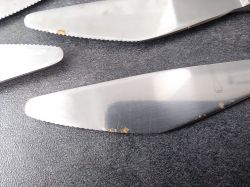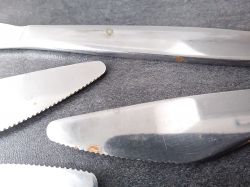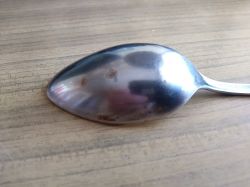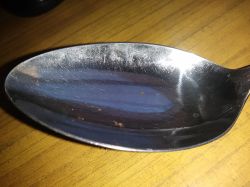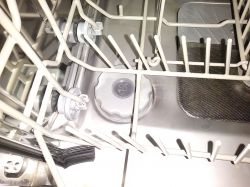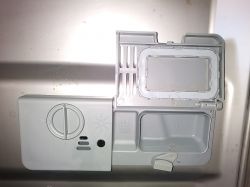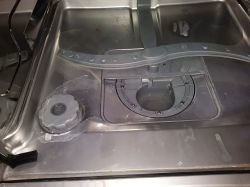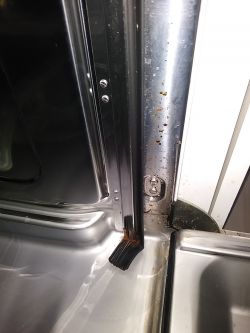Ture11 wrote: The feature of dishwashers is that these chemicals degrade the cutlery. I have spots like that too, normal...
Of course, without trying to prove it, dishwashers unfortunately degrade what is washed in them. This is something for something.
Ture11 wrote: The feature of dishwashers is that these chemicals degrade the cutlery. I have spots like that too, normal...
This happens with me, and with my parents too. Interestingly, it appears from time to time on Gerlach models from the 1980s. Mainly knives, maybe spoons. To make things more interesting, spoons and forks are not necessary. This has never worked for me with newer, cheap everyday cutlery and festive sets.
Generally, it will be the result of some chemical reaction, steel, residues and chemicals. I don`t know what exactly is going on there, I won`t go into detail because I don`t need it. The spots can be polished off quickly and that`s it.
My and my parents` dishwasher, I can assure you, is in perfect condition.
Ture11 wrote: Slight offtopic:
The sudden appearance of this type of corrosion, although it was not there before, reminds me a bit of this thread:
Link
But that`s where it happened "in a big way"...
Something else happened there, there was an Amica dishwasher, and their equipment now tends to corrode in the washing chambers, which should nomen omen be made of stainless steel, but Amica is currently a purely Chinese product, so there is no point in expecting miracles.
Nevertheless, that case was spectacular.
Janusz_kk wrote: Ture11 wrote: This right here, this is bullshit, buddy!
Weigh your words, my friend, read how modern water-saving dishwashers work and then apologize.
Unfortunately, something is ringing, just not entirely in this church. Col. Ture11 is right.
The dishwasher wouldn`t be able to wash even a spoon with this little water, for the simple reason that it won`t be able to create pressure on the pump with such a small amount of water.
What`s on your mind is not changing the water between the initial and main wash. Dishwashers equipped with OWI sensors, if the water at the end of the pre-wash cycle is relatively clean, may decide not to replace it for the main wash.
EOT
